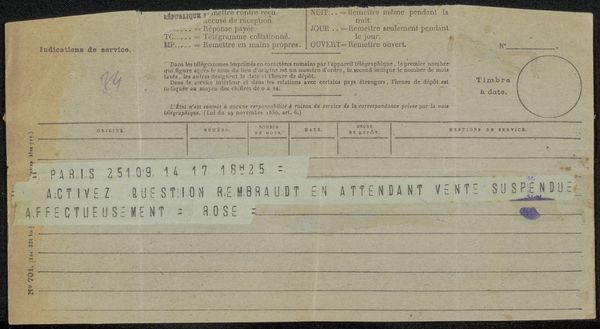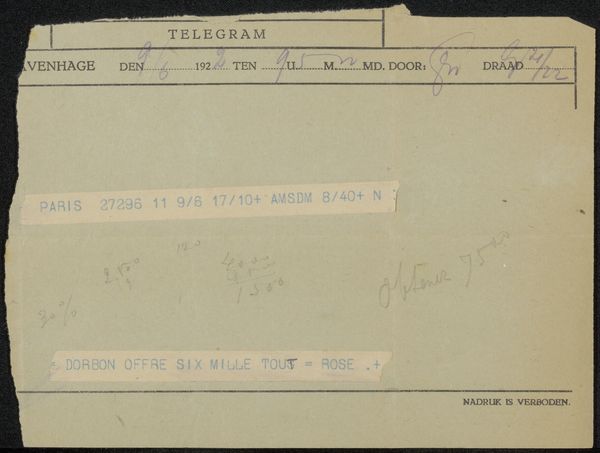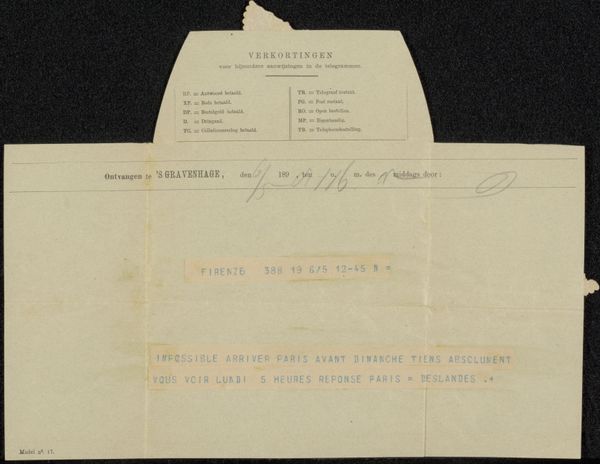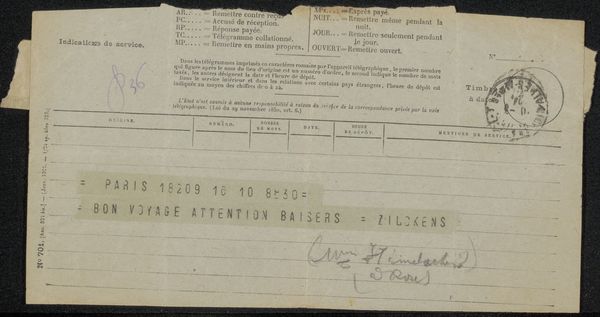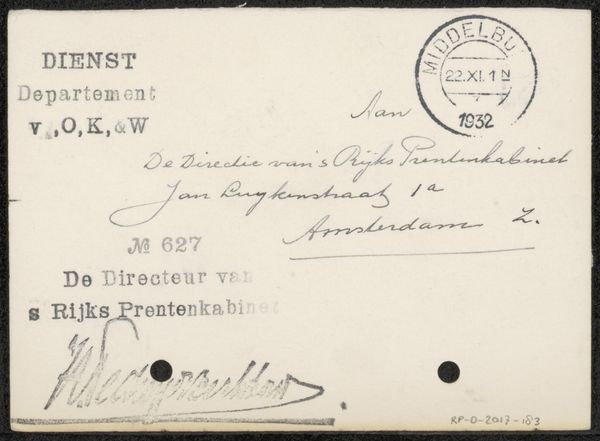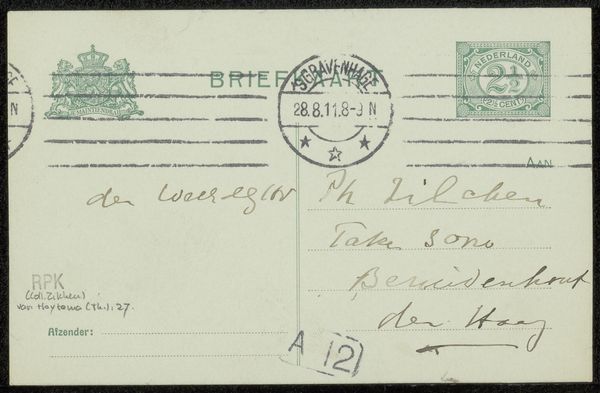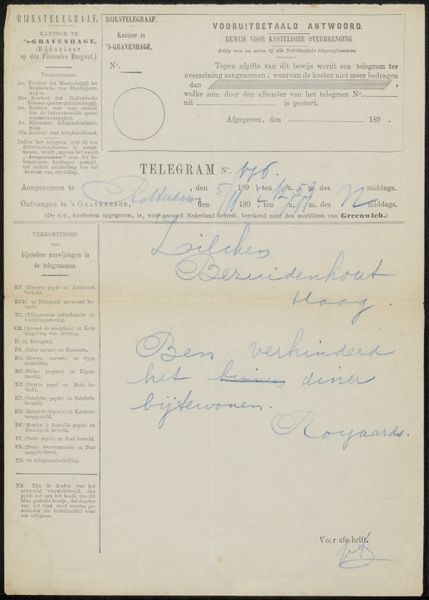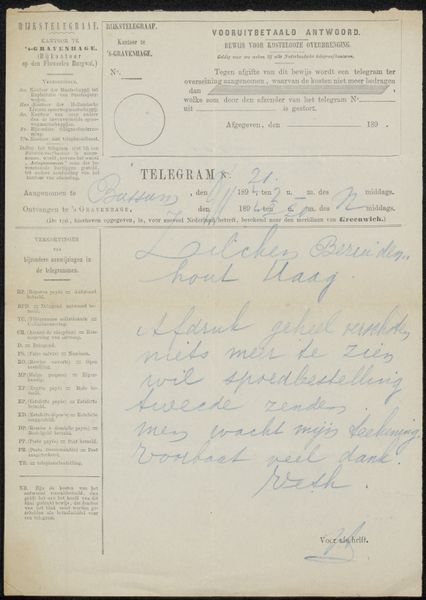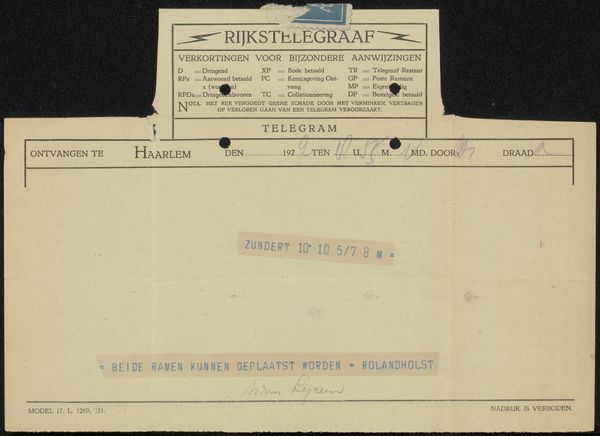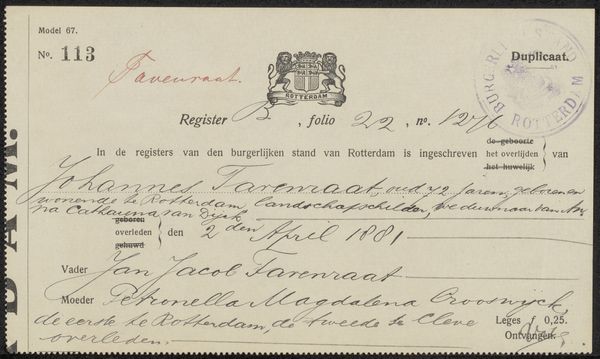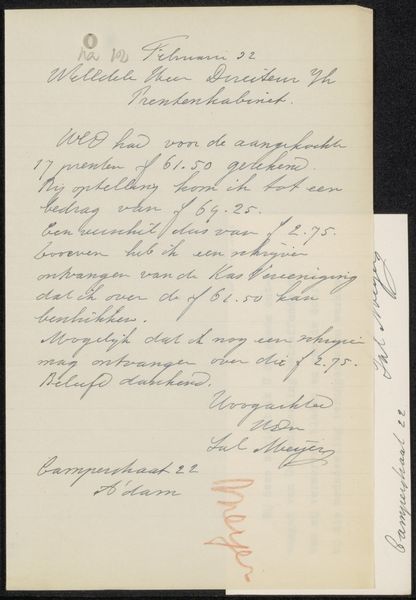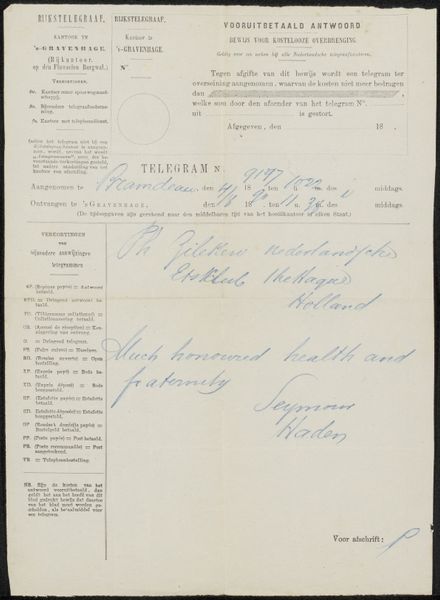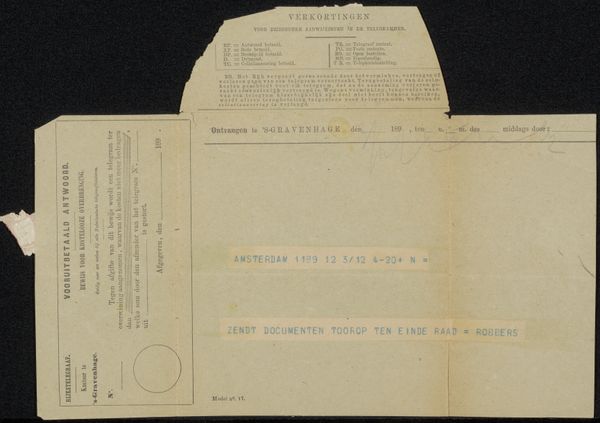
graphic-art, print, textile, paper, ink
#
graphic-art
# print
#
textile
#
paper
#
ink
Copyright: Rijks Museum: Open Domain
Curator: This is "Telegram aan Philip Zilcken," a print on paper with ink, possibly created between 1922 and 1926. Editor: The artifact’s materiality speaks volumes. It seems ephemeral—urgent in its nature, yet aged and fragile in its survival. Its cream surface and visible wear around the edges definitely hint at a story. Curator: Absolutely. The telegram, as a historical object, symbolizes immediate communication from a bygone era, hinting at a network that connects individuals and nations with an urgency that’s palpable even now. Notice how its fragmented message also mirrors the fragmented nature of memory itself. Editor: Right, the use of French also raises questions about cultural exchange and global relations in the early 20th century. I’m also drawn to how telegrams, in particular, serve as potent reminders of social and political contexts—situating the object amid historical narratives centered around trade, diplomacy, or even conflict. “URGENT” written here seems almost pleading. Curator: Indeed, the word 'Telegram' itself carries cultural weight, reminding us of specific communicative practices and associated feelings of immediacy, suspense, and anticipation, a symbolism largely displaced in the digital age. The handwritten annotations at the bottom of this example especially draw my attention; I’m curious about the personal dimension it adds to a standard format. Editor: That interplay of public format and intimate message is intriguing. A standardized form transformed into a unique personal plea or demand exposes the complex politics inherent in every supposedly neutral exchange, making this object far more than just an archived record. The word "Rose" alone hints at potential connections centered around intimacy or romantic love in addition to more mundane reasons to request someone’s immediate reply. Curator: Seeing this object evokes the fragility of relationships over a great span of time. I’m also considering how images serve as triggers to forgotten memories, making “Telegram aan Philip Zilcken” an important medium through which to explore the emotional landscapes of the past. Editor: In the end, what started out as a means of quick exchange survives now to open a deeper consideration of the cultural frameworks through which human relationship continues to operate, asking questions of history as much as answering them.
Comments
No comments
Be the first to comment and join the conversation on the ultimate creative platform.
